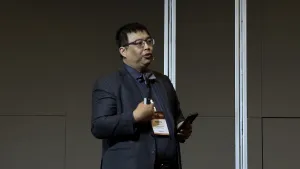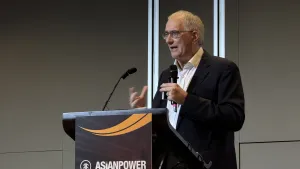
BTN urges reforms to scale up low-carbon housing in Indonesia
The state-owned lender wants to make green housing mainstream.
PT Bank Tabungan Negara (Persero) Tbk (BTN) is pushing policy reforms to support the construction of 150,000 low-carbon homes by 2029.
The state-owned and publicly listed Indonesian bank wants to make sustainable housing accessible and mainstream, rather than a niche or premium offering.
To achieve this, BTN is calling for a national green building code tied to tax incentives for developers, fiscal support for builders targeting low- and middle-income markets, and technical training for local governments, developers, and suppliers.
It also proposes creating regional clusters to source low-emission construction materials locally.
“We need clear policy signals that reward sustainable construction,” said Setiyo Wibowo, director of risk management at BTN. “Without that, the market will keep seeing green housing as a premium product, when it should be the default.”
BTN’s push follows the results of its 2024 pilot project, which built 1,198 low-emission homes. The initiative highlighted major gaps, including limited access to certified materials, weak regulatory frameworks, and a lack of technical knowledge across the housing value chain.
To address material shortages, especially outside major cities, BTN is partnering with small and medium enterprises and recycling companies to develop green regional supply chains.
“Sourcing low-carbon materials outside major cities is still a hurdle,” Wibowo said. “These local partners are essential to our approach.”
Sustainable housing is often perceived as expensive, but BTN argues that the long-term benefits far outweigh the upfront costs. He cited lower utility bills, better health outcomes, and improved climate resilience as key advantages.
“We want to change the narrative,” Wibowo said. “Low-emission homes are not luxury goods. They’re essential infrastructure.”
BTN’s pilot used energy-efficient design, water-saving technology, and circular construction methods. It also used recycled materials, including plastic waste, to cut embodied emissions—the total greenhouse gas emissions associated with the production of a product or service.
If scaled up, the program could reuse 2.2 million kilos of plastic and cut emissions by 2,741 metric tons of carbon emissions—comparable to planting more than 45,000 trees.
“Waste becomes a resource in this model,” Wibowo said. “We’re not just building houses—we’re building a green supply chain.”
To further reduce risk and encourage adoption, BTN is using blended finance tools and building partnerships with public and private stakeholders.
“We are a national lender, but we also see ourselves as a system integrator,” Wibowo said. “We’re using our position to drive collaboration across the value chain.”
Local governments are crucial to the effort, he added. BTN is helping align local planning, permitting, and zoning regulations with climate goals.
“Many of them want to help but lack the tools,” he said. “We’re filling that gap through workshops, training, and certification.”
The bigger goal is to align the housing sector with Indonesia’s climate goals. The country has pledged to cut greenhouse gas emissions by 31.89% unconditionally—and by 43.2% with international support—by 2030.
“Housing is central to the climate challenge,” Wibowo said. “If we get it right, we can make low-carbon living the norm, not the exception.”















